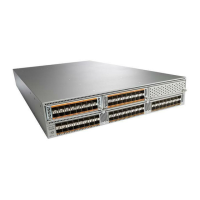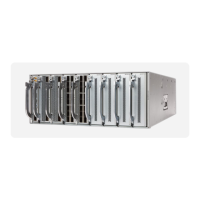PurposeCommand or Action
Specifies the Ethernet interface to use as the source
SPAN port.
source interface ethernet slot/port
Example:
switch(config-span-on-latency)#
source interface ethernet 1/3
Step 7
Specifies the Ethernet interface to use as the session
destination port.
destination interface ethernet slot/port
Example:
switch(config-span-on-latency)#
destination interface ethernet 1/1
Step 8
Defines the MTU truncation size for SPAN packets.
Valid values are from 64 to 1518.
mtu mtu-value
Example:
switch(config-span-on-latency)# mtu
1500
Step 9
The default is no truncation enabled.
Updates the configuration and exits SPAN-on-Latency
session configuration mode.
exit
Example:
switch(config-span-on-latency)# exit
Step 10
(Optional)
Saves the change persistently through reboots and
restarts by copying the running configuration to the
startup configuration.
copy running-config startup-config
Example:
switch(config)# copy running-config
startup-config
Step 11
Activating a SPAN Session
The default is to keep the session state shut. You can open a session that duplicates packets from sources to
destinations.
Procedure
PurposeCommand or Action
Enters global configuration mode.switch# configure terminal
Step 1
Opens the specified SPAN session or all
sessions.
switch(config) # no monitor session {all |
session-number} shut
Step 2
The following example shows how to activate a SPAN session:
switch# configure terminal
switch(config) # no monitor session 3 shut
Cisco Nexus 5600 Series NX-OS System Management Configuration Guide, Release 7.x
OL-31641-01 189
Configuring SPAN
Activating a SPAN Session

